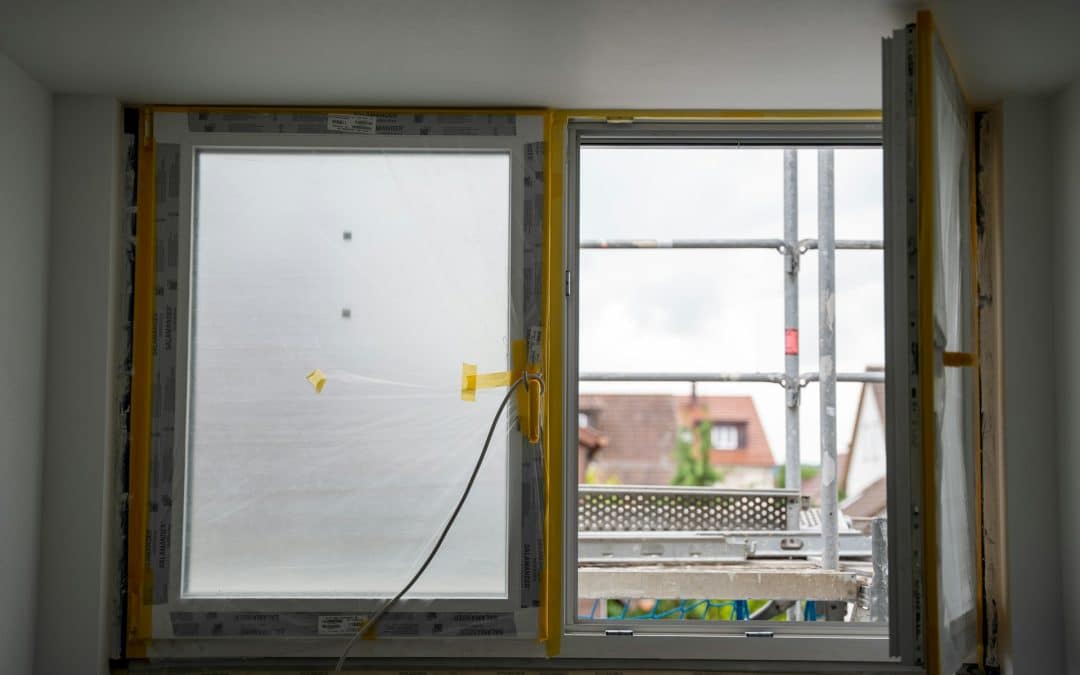Weather plays a bigger role in window installation than most people think. Whether it’s blazing hot, rainy, or chilly out, the weather can shape how smoothly the job goes and how your new windows perform over time. Even with all the right tools and prep work in place, the outdoor conditions on installation day can cause delays, affect materials, or lead to future issues if things aren’t handled carefully.
Understanding how different weather conditions affect the process is helpful when planning for new windows. It’s not just about comfort. It’s about safety, timing, and getting the best results possible. From extreme summer heat to sudden downpours, let’s look at how different types of weather affect window installation and what that means for your home.
How Different Weather Conditions Impact the Installation Process
Installing windows helps make a home more energy-efficient and well insulated, but timing matters just as much as the materials you pick. The weather can create more than just delays. It can also change how well those materials work and how the team manages the project.
Here’s how different weather conditions can impact the window installation process:
– Hot Weather: Extreme heat can cause sealants to dry too fast or too unevenly. That might lead to weak seals or air gaps. Some materials, like vinyl, expand in the heat, which can throw off measurements or affect how tightly a frame fits. The heat also makes it harder for the crew to keep a steady pace during labor-heavy tasks.
– Cold Weather: Freezing temperatures make some adhesives too stiff to apply well. Materials like caulk or foam don’t behave the same when it’s cold. Glass and window frames also become more fragile and harder to work with. In cold weather, installers may need special supplies or techniques that take more time and care to get right.
– Rain and Moisture: Rain can prevent caulking from sealing, especially on wooden frames. If moisture sneaks in during the process, it can get trapped behind the window and cause bigger issues later, like mildew or rot. Wet ground or slick surfaces also make it harder to handle windows safely and level everything properly.
A homeowner might plan their project for early summer, hoping for mild weather. But a heatwave rolls in, making sealants dry instantly and leaving cracks behind. That’s why working with a team that knows how to adapt to weather conditions is so important.
Even if the forecast looks good at first glance, things like high humidity or gusty wind can throw off the job. The best way to handle it is to expect surprises and plan ahead.
Seasonal Considerations for Dallas-Fort Worth Area
In the Dallas-Fort Worth area, the weather can change quickly, and each season brings its own challenges for window installation. While installation is possible at any time of year, local homeowners will get better results by planning based on typical seasonal conditions.
Take a look at what each season usually brings:
– Spring: This is a great time for window projects. Temperatures are mild, days are longer, and storms haven’t fully picked up yet. Materials work well in these conditions, and workers can stay safe and work efficiently.
– Summer: The heat shows up fast in North Texas. Mornings are best for working before temperatures climb too high. Sudden thunderstorms can also interrupt projects, so it’s smart to keep an eye on the forecast and build in some wiggle room for changes.
– Fall: Fall brings the most consistent conditions. Temperatures cool off, humidity drops, and weather delays are usually fewer. Homeowners often use this time to prep for winter.
– Winter: It’s possible to install windows during the winter, but cold snaps can cause delays. Some adhesives and materials don’t set well in very low temperatures. If planning a winter project, it helps to be flexible with timing in case the weather turns rough.
Knowing when storms or temperature extremes are most likely helps avoid costly mistakes. If you’re thinking about replacing your windows, checking the seasonal forecast for Dallas-Fort Worth could help you choose a better window of time, allowing for better working conditions and long-lasting results.
Preparing for Weather-Related Delays
Weather is one thing no one can fully predict, but prepping ahead of time helps make window installation smoother. It doesn’t take much to stay ready, and a few small steps can make a big difference.
Watch the local weather forecast starting several days before the installation date. If strong winds or rainstorms are on the way, be prepared to adjust the schedule. A good installation team will always put safety and long-term results first. That means they won’t rush through the job just to beat the rain.
Homeowners can also take action to protect their space and help the crew stay on track. Here are a few ways to prepare:
- Make sure the area around the windows is clear, both inside and outside.
- Move any furniture or valuable items away from work areas.
- Trim back bushes or branches that could get in the way.
- Cover any nearby items with plastic or tarps in case the weather shifts suddenly.
If rain is expected, check that gutters and drainage areas are clear. You want to avoid water building up next to your window frames while they’re being worked on.
One local homeowner once planned their window job in the fall, right before the weather usually cools down. That night, a storm surprised everyone. Luckily, they had already cleared the area and covered furniture inside. The crew just paused, then returned to pick up right where they left off the next morning. No damage, no rework, just a smart adjustment.
These kinds of quick actions can protect both your home and the project timeline.
Why Professional Installation Is Key
Window installation is a skilled job anytime, but weather makes it even more important to bring in trained professionals. From the way materials need to be handled to how quickly products react to heat or humidity, working conditions matter.
A professional crew won’t just follow a checklist. They bring local know-how and pay attention to the outdoor environment. Instead of guessing, they’ll know how to adjust their process depending on whether it’s humid, windy, too hot, or just borderline workable conditions.
They’ll also use tools and materials that make sense for the season. That might include sealants designed for cold temperatures or flashing that seals better in humid climates. Their past experience becomes one more layer of protection for your install.
Going with a skilled and experienced team also pays off long-term. If shortcuts are taken or weather concerns ignored, small issues can turn into major problems down the line. Leaks, gaps, or warped materials may not happen right away, but they often show up a season or two after a rushed install.
Trusting a professional team helps prevent that. It’s better to have one good install done with care than have to redo it when problems show up later.
Plan Smart for an All-Season Window Upgrade
No one can control the forecast, but you can take steps that improve the chances of a smooth window installation. From choosing the best time of year to getting ready for last-minute delays, it all adds up to a better experience and windows that keep your home comfortable year-round.
Heat, rain, and cold all bring unique challenges. But when timing, prep work, and the right team come together, those challenges can be handled without slowing you down.
Make the weather something you plan around, not something you worry about. A little extra thought now means better results later.
Window installation is a project worth doing right, no matter what month it is in Dallas-Fort Worth.
When you’re ready to move forward with your project, consider professional window installation by American Windows of DFW. Our expert team knows how to handle whatever weather comes our way, making sure your windows are installed properly no matter the season. Let’s get your home ready for anything.

